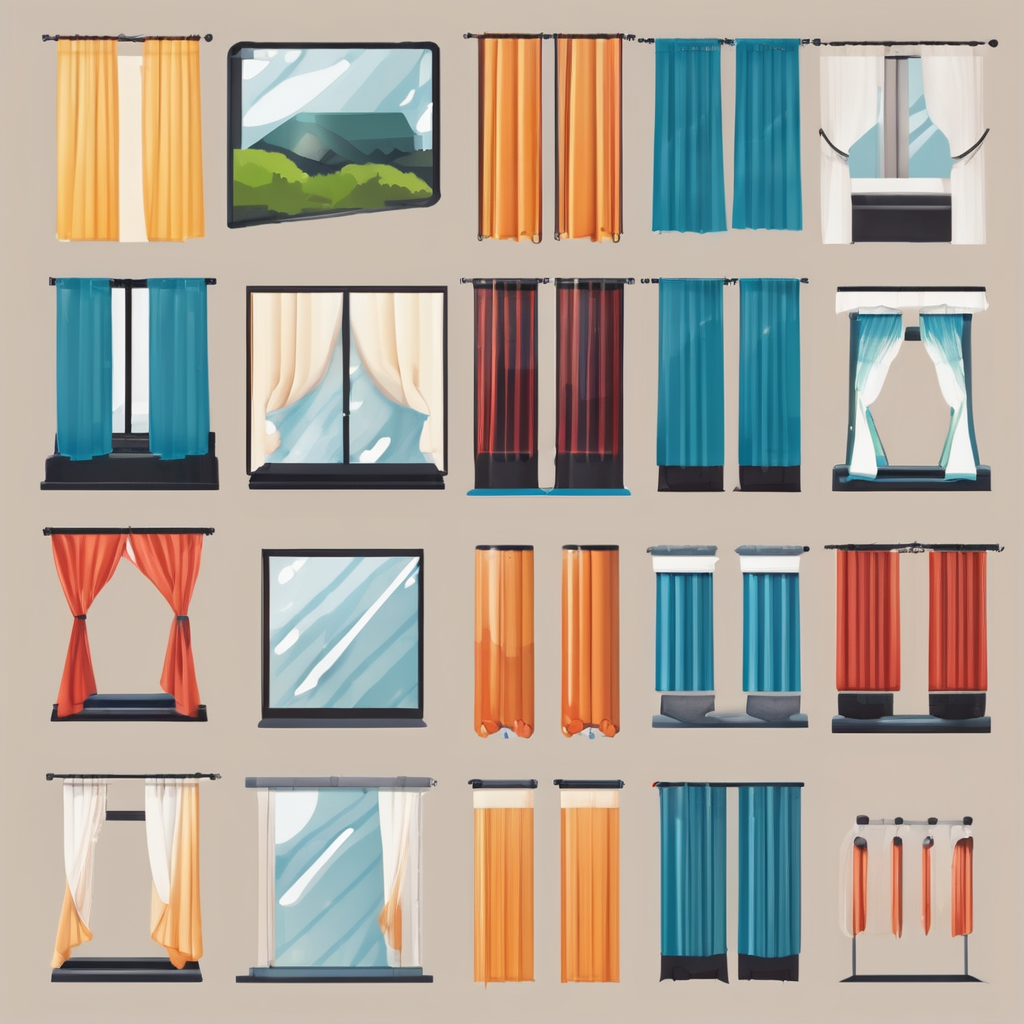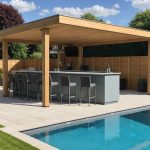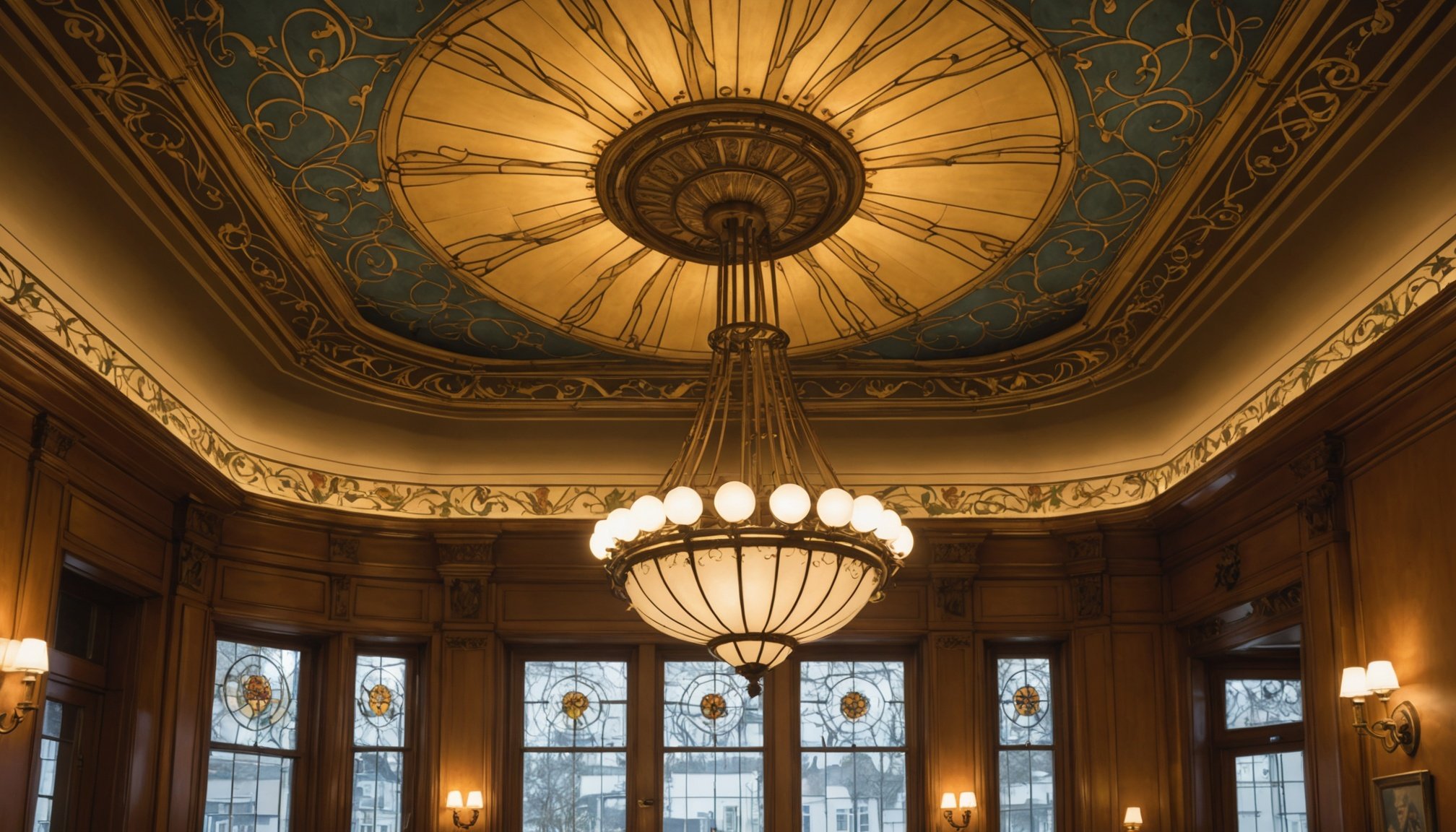Overview of Art Nouveau Lighting Principles
Art Nouveau lighting techniques are celebrated for their elegant and organic aesthetics, characterised by flowing lines and nature-inspired motifs. This design style plays a crucial role in highlighting architectural illumination principles through its unique ability to blend functionality with artistry. Historically, Art Nouveau emerged at the turn of the 20th century, reacting against the industrial mass production of the Victorian era by embracing handcrafted artistry and intricate details.
The significance of lighting in enhancing architectural features cannot be understated. Art Nouveau designers employed innovative methods to accentuate the curves and contours of their architectural counterparts, creating a harmonious symbiosis of light and form. Such techniques extend beyond mere illumination, serving as a medium for aesthetic expression.
Also read : Uncovering the Hottest Sustainable Material Trends for Eco-Friendly UK Home Renovations
The historical context of Art Nouveau lighting designs illustrates their evolution from traditional gaslight fittings to the advent of electric lighting. This transition was marked by a newfound freedom in design, allowing for more elaborate fixtures. The evolution of these designs showcases a unique integration of new technology with timeless artistic values, solidifying Art Nouveau as a distinctive style in architectural illumination. By understanding these principles, one can appreciate the enduring legacy and artistic ingenuity of Art Nouveau lighting.
Techniques for Highlighting Architectural Details
Art Nouveau lighting techniques go beyond simple illumination, serving as a tool for highlighting architecture’s intricate details. These lighting techniques are crafted to accentuate features often overlooked in the architectural designs.
Topic to read : Essential Components for Crafting a Genuine Coastal Bathroom Inspired by the UK
One strategic method is the placement of light sources. Positioning lights at different angles can bring out unique aspects of the architecture, especially in areas with elaborate moldings or carvings. By focusing light on specific regions, designers create an interplay of light and shadows that adds depth and dimension to the design. This play of light and shade is pivotal in emphasizing the nuanced details, giving a dramatic effect that enhances the overall aesthetic.
Moreover, using shadows and contrast is an essential technique within Art Nouveau lighting strategies. Shadows can be manipulated to create a moody atmosphere, while contrasts between light and dark areas help particular features stand out, drawing the eye to the finer points of the design.
The integration of modern technology with traditional designs further expands these possibilities. Innovative lighting solutions, like LED technology, can be combined with classic materials to create fixtures that honour the past while meeting contemporary design methods. This fusion of old and new maintains the integrity of Art Nouveau’s artistic vision.
Examples of Suitable Fixtures for Art Nouveau Lighting
Art Nouveau light fixtures are a cornerstone of decorative lighting, offering a unique blend of aesthetics and functionality. These fixtures often showcase organic forms, vegetal motifs, and flowing lines, aligning with the style’s overarching design principles. When considering types of fixtures compatible with Art Nouveau, chandeliers, pendant lights, and wall sconces prominently feature. These elements often incorporate stained glass or metalwork, adding to their visual impact.
In terms of recommended styles and designs, fixtures with floral or geometric patterns can enhance the Art Nouveau ambience. Opting for fixtures crafted from materials like brass or bronze with glass accents aligns well with the style’s historical roots. Such materials not only reflect the period’s authenticity but also provide durability and are often found in historical lighting examples.
Choosing the right fixtures necessitates considering the architectural style of the space. For instance, elaborate fixtures are ideal for rooms with high ceilings and intricate mouldings, while simpler designs suit more minimalist settings. Always balance the fixture’s ornate qualities with the overall decor to maintain harmony within the space. By applying these insights, homeowners can effectively integrate Art Nouveau lighting into their environments.
Case Studies of Successful Applications
Exploring case studies of Art Nouveau lighting in UK homes provides valuable insights into its practical applications. These examples illustrate the harmonious blend of classic design and functionality, showcasing success stories that inspire.
A notable project involved a Victorian townhouse in London, where designers focused on integrating Art Nouveau lighting techniques throughout the interior. By installing period-appropriate chandeliers with stained glass elements, they highlighted the home’s intricate mouldings and high ceilings. The use of warm-toned LED bulbs ensured energy efficiency, while retaining the soft glow characteristic of historical lighting.
Another case involved a modern apartment, where the challenge was to incorporate Art Nouveau light fixtures without overwhelming the contemporary space. Here, designers used pendant lights with brass finishes and floral motifs to add an elegant touch. By strategically placing these fixtures above key areas like dining tables and entryways, they managed to draw attention to architectural details subtly.
Lessons learned from these success stories emphasise the importance of balancing ornate features with the room’s overall style. Through careful design choices, homeowners can achieve a satisfying blend of history and modernity, adding character and charm to their living spaces. These case studies demonstrate that with thoughtful selection and placement, Art Nouveau lighting can thrive in diverse environments.
DIY Tips for Homeowners
Embarking on DIY lighting projects in the Art Nouveau style can transform living spaces into artistic havens. Many homeowners are drawn to this approach due to its blend of creativity and home improvement benefits. With the right guidance, creating Art Nouveau-inspired fixtures is accessible to many.
Begin with simple projects such as crafting lampshades adorned with floral motifs or geometric patterns, echoing the era’s aesthetics. Essential materials can be easily sourced, with UK suppliers offering a range of historically accurate and modern options. Look for stained glass, wrought iron, or natural elements like wood to incorporate an authentic Art Nouveau flavour.
When sourcing fixtures, consider purchasing pre-owned pieces from online marketplaces to maintain the historical integrity of the design. Combining these with modern LED bulbs ensures energy efficiency while keeping the warm glow distinctive to the style.
Achieving professional results at home involves attention to detail. Use techniques like soldering for metalwork or contrasting paints for intricate patterns. For more elaborate projects, enlisting local artisans for guidance or collaborative opportunities can provide insight into mastering the Art Nouveau style. This not only supports the local economy but enriches the craftsmanship of your DIY endeavours.
Links to Relevant UK Sources and Suppliers
Finding the right UK suppliers and resources is essential for those eager to explore Art Nouveau lighting projects. The unique blend of modern materials with historically accurate elements can be sourced with ease from reputable suppliers across the UK.
Recommended Suppliers for Fixtures and Materials
- Tyson Lighting offers a wide range of Art Nouveau-inspired fixtures, including chandeliers and wall sconces, integrating both traditional and contemporary elements.
- Timothy Oulton is known for pieces that fuse historical charm with modern elegance.
These suppliers are recognised for their high-quality materials, ensuring authenticity in your lighting projects.
Online Resources for Further Exploration
A myriad of online platforms provides in-depth guides and inspiration for Art Nouveau lighting. Websites like Houzz and Pinterest can be valuable resources for design ideas and creative techniques, offering a plethora of lighting resources and inspiration boards to ignite your creativity.
Networking Opportunities with Local Artisans
Consider networking with local artisans to gain insights into Art Nouveau’s craftsmanship. Joining forums or attending workshops can offer opportunities to collaborate, learn techniques, and purchase handcrafted fixtures directly from craftsmen, ensuring your projects not only support local talent but also maintain historical integrity.











